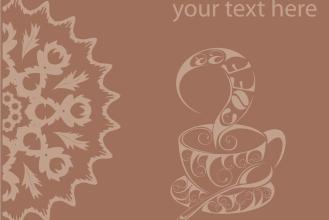Introduction to the characteristics of coffee flavor and taste of Ethiopian coffee manor with long, pointed beans
Ethiopia washed coffee yejia sherfi G1 G2
The highest grades of Yirgacheffe, Sidamo are Grade II and Grade III (G2, G3),
Most of the sun-processed coffee in eastern Ethiopia is grade 4 or grade 5 (G4, G5).
In many cases, fourth-grade coffee is labeled as five-grade in order to reduce taxes. Now the classification is a little bit uneven, because there are Grand G2 and Grand G2 sun-cured Yirga Cheffe, but Harar is at the top grade 4 Ethiopia is the home of Arabica coffee, and it is in the forests of the Kaffa region that you can see Arabica coffee wild. In Ethiopian, coffee is called "Bun" or "Buna," and coffeebean may be translated from "Kaffa Bun." Arabica coffee has long been found in Harar, probably from the Kafa forest.
Ethiopian coffee is processed by sun and water washing. The flavor of coffee processed by different processing methods varies greatly. Generally speaking, the mellow and earthy taste of washed Sidamo, Yirgacheffe and Limmu coffee is slightly lower, and the coffee processed by sun has a wilder taste. However, the taste of each batch of Ethiopian coffee may be different, which requires more cup tests to find out how many Arabica species there are in Ethiopia. Even the official research unit of Ethiopia cannot say clearly. Coffee cooperatives on one mountain certainly grow different varieties than those on another, and even small farmers in the same area grow different varieties of coffee. Some estimate that there are at least 2,000 varieties of Ethiopian coffee, and there are even more than 4,500 varieties. Ethiopian beans appear to be a bit malnourished compared to the fat bodies of Bourbon 'SL28', the dominant variety in Kenya to the south, or the Central and South American and Asian tibeka. But "beans" can not be judged by appearance, Ethiopian coffee citrus aroma can be called the world's best, whether instant coffee or freshly ground coffee, extraction on the smell of orange or lemon fragrance. On the palate, it has a rich floral, fruity and sour aroma that is characteristic of Ethiopia, but the body or consistency is slightly poor. The biggest drawback is that it is easy to bake unevenly, especially sun beans. Even the best Grade3 Harald sun-baked beans often show uneven color, which is the biggest defect of Ethiopian beans, but fortunately it does not affect its good flavor. For coffee fans, don't care how the beans look, the most important thing is to drink. Ethiopian washed beans are much more stable than sun-dried beans, whose flavor fluctuates greatly from year to year, so be sure to cup them several times before buying them in large quantities. Good sun-baked beans have a much deeper flavor than washed beans, but mishandled sun-baked beans are sure to leave you speechless, as many coffee fans say

Important Notice :
前街咖啡 FrontStreet Coffee has moved to new addredd:
FrontStreet Coffee Address: 315,Donghua East Road,GuangZhou
Tel:020 38364473
- Prev

Introduction to the characteristics of coffee flavor and taste in Nicaragua's Tianyi Manor, which is very aromatic and mellow.
Nicaragua is located in central Central America, bordered by the Pacific Ocean to the west and the Caribbean Sea to the east. The highlands in the north and the coastal plains in the east are part of the Central American volcanic belt. The eastern plain is high-temperature and rainy, with a tropical maritime climate. The suitable climate provides an excellent growth environment for the cultivation of coffee. High-quality Nicaraguan coffee, grown in the north and middle of the country. Coffee is Ni.
- Next

Introduction of Coffee Flavor and Taste characteristics in Xidamo Chiso producing area of Ethiopia
In February 1977, Lieutenant Colonel Mengistu Haier Maryam (MENGISTU HAILE MARIAM) launched a military coup and served as Chairman of the interim military Administrative Council and head of State. In 1979, the Ethiopian Labor people's Party Organization Committee, dominated by soldiers, was established to implement an one-party system. In 1984, the Ethiopian Workers' Party was formed according to the Soviet Communist Party model. Mengistu, September 1987
Related
- Does Rose Summer choose Blue, Green or Red? Detailed explanation of Rose Summer Coffee plots and Classification in Panamanian Jade Manor
- What is the difference between the origin, producing area, processing plant, cooperative and manor of coffee beans?
- How fine does the espresso powder fit? how to grind the espresso?
- Sca coffee roasting degree color card coffee roasting degree 8 roasting color values what do you mean?
- The practice of lattes: how to make lattes at home
- Introduction to Indonesian Fine Coffee beans-- Java Coffee producing area of Indonesian Arabica Coffee
- How much will the flavor of light and medium roasted rose summer be expressed? What baking level is rose summer suitable for?
- Introduction to the characteristics of washing, sun-drying or wet-planing coffee commonly used in Mantenin, Indonesia
- Price characteristics of Arabica Coffee Bean Starbucks introduction to Manning Coffee Bean Taste producing area Variety Manor
- What is the authentic Yega flavor? What are the flavor characteristics of the really excellent Yejasuffi coffee beans?

